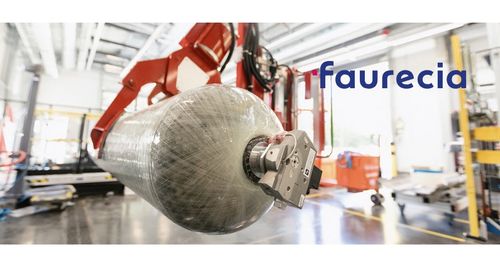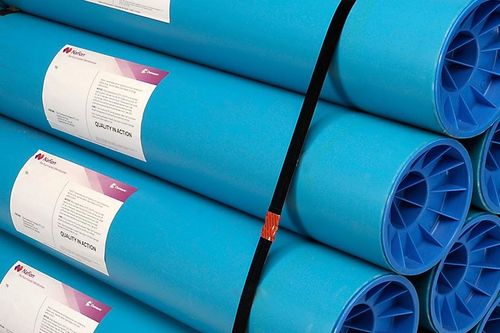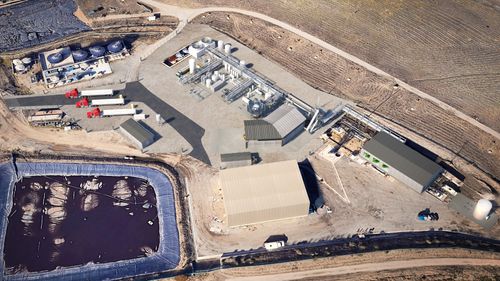Strata Clean Energy is developing a pipeline of green hydrogen projects that will produce large amounts of green ammonia and other hydrogen derivatives later this decade.
Mike Grunow, executive vice president and general manager of Strata’s Power-to-X platform, said in an interview that the company is investing in the development of proprietary modeling and optimization software that forms part of its strategy to de-risk Power-to-X projects for compliance with strict 45V tax credit standards.
“We’re anticipating having the ability to produce substantial amounts of low-carbon ammonia in the back half of this decade from a maturing pipeline of projects that we’ve been developing, and we’re looking to collaborate with global chemical, energy, and shipping companies on the next steps for these projects,” he said.
Strata’s approach to potential strategic offtakers could also include the partner taking an equity stake in projects, “with the right partner,” Grunow said. The projects are expected to reach FID in 2025.
Grunow declined to comment on the specific size or regional focus of the projects.
“We aspire for the projects to be as large as possible,” he said. “All of the projects are in deep discussions with the regional transmission providers to determine the schedule at which more and more transmission capacity can be made available.”
Strata will apply its expertise in renewable energy to the green hydrogen industry, he said, which involves the deployment of unique combinations of renewable energy, energy storage, and energy trading to deliver structured products to large industrial clients, municipal utilities and regulated utilities.
The company “commits to providing 100% hourly matched renewable energy over a guaranteed set of hours over the course of an entire year for 10 – 20 years,” Grunow said.
“It’s our expectation that the European regulations and more of the global regulations, and the guidance from the US Treasury will require that the clean energy supply projects are additional, deliverable within the same ISO/RTO, and that, eventually, the load of the electrolyzer will need to follow the production of the generation,” he said.
Strata’s strategy for de-risking compliance with the Inflation Reduction Act’s 45V revenue stream for green hydrogen will give asset-level lenders certainty on the delivery of a project’s IRA incentives.
“Right now, if I’m looking at a project with an hourly matched 45V revenue stream, I have substantial doubt about that project’s ability to actually staple the hourly matched RECs to the amount of hydrogen produced in an hour, to the ton of hydrogen derivative,” he said.
During the design phase, developers evaluate multiple electrolyzer technologies, hourly matching of variable generation, price uncertainty and carbon intensity of the grid, plant availability and maintenance costs along with evolving 45V compliance requirements.
Meanwhile, during the operational phase, complex revenue streams need to be optimized. In certain markets with massive electrical loads, an operator has the opportunity to earn demand response and ancillary service revenues, Grunow said.
Optimal operations
“The key to maximizing the value of these assets is optimal operations,” he said, noting project optionality between buying and selling energy, making and storing hydrogen, and using hydrogen to make a derivative such as ammonia or methanol.
Using its software, Strata can make a complete digital twin of a proposed plant in the design phase, which accounts for the specifications of the commercially available electrolyzer families.
Strata analyzes an hourly energy supply schedule for every project it evaluates, across 8,760 hours a year and 20 years of expected operating life. It can then cue up that digital project twin – with everything known about the technology options, their ability to ramp and turn down, and the drivers of degradation – and analyze optimization for different electrolyzer operating formats.
“It’s fascinating right now because the technology development cycle is happening in less than 12 months, so every year you need to check back in with all the vendors,” he said. “This software tool allows us to do that in a hyper-efficient way.”
A major hurdle the green hydrogen industry still needs to overcome, according to Grunow, is aligning the commercial aspects of electrolysis with its advances in technological innovation.
“The lender at the project level needs the technology vendor to take technology and operational risk for 10 years,” he said. “So you need a long-term service agreement, an availability guarantee, key performance metric guarantees on conversion efficiency,” he said, “and those guarantees must have liquidated damages for underperformance, and those liquidated damages must be backstopped by a limitation of liability and a domestic entity with substantial credit. Otherwise these projects won’t get financed.”






